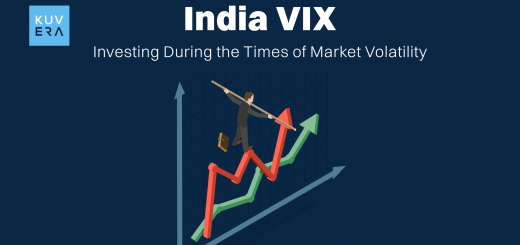When you look at a company’s financial health, the reports you see can come in two main forms. One is standalone and the other is consolidated financial statements. But what do these terms mean, and which one should you focus on? Let’s break down these concepts in a simple way, when it comes to investing or understanding a company’s financial status.
What are Standalone Financial Statements?
Standalone financial statements give you a summary of a single company’s financial health. These reports focus on one company only, without considering any subsidiaries companies.
For example, if Company A operates independently, its standalone financial statement will show its assets, liabilities, revenue and expenses– everything specific to Company A alone.
Key Components of Standalone Financial Statements
Now that you know what standalone financial statements are, let’s discuss its key components:
1. Balance Sheet: It displays the company’s assets, liabilities, and equity at a specific point in time.
2. Income Statement: This statement shows the company’s revenue, expenses and net profit or loss over a particular period.
3. Cash Flow Statement: It tracks the cash inflows and outflows from operating, investing and financing activities.
Start investing in Index Funds.
What are Consolidated Financial Statements?
Consolidated financial statements, on the other hand, give you a complete picture of a parent company and all its subsidiaries as if they were one single entity. These reports combine the financial information of the parent company and its subsidiaries, giving you a more holistic view of the entire business group’s financial performance.
For instance, take the ITC conglomerate. Here is the list of its major subsidiaries:
| Subsidiary Company of ITC | Industry |
|---|---|
| ITC Infotech | Technology |
| Srinivasa Resorts Limited | Hospitality |
| Surya Nepal Private Limited | Cigarettes, Safety Matches, Agarbatti and Confectionary |
| Fortune Park Hotels Limited | Hospitality |
| Landbase India Limited | MCA Provider |
| Welcomhotels Lanka (Private) Limited, Srilanka | Hospitality |
| Russell Credit Limited | Investment Company |
| Technico Pty Limited | Supply Chain Solutions |
So, in the consolidated financial statements of ITC, all the financial statement information such as the profit, revenue, assets, liabilities and equity of its subsidiary companies are also included. Even its flagship brands like Aashirvaad, Sunfeast, Bingo, Classmate, Fiama and Vivel are also included.
Key Components of Consolidated Financial Statements
1. Consolidated Balance Sheet: This balance sheet merges the assets, liabilities and equity of the parent company and its subsidiaries.
2. Consolidated Income Statement: This income statement combines the revenues, expenses, and net income of the parent company and its subsidiaries.
3. Consolidated Cash Flow Statement: It aggregates the cash flows of the parent company and its subsidiaries.
Which is Better– Standalone or Consolidated Financial Statements?
Whether standalone or consolidated financial statements are better depends on what you’re looking for. If you want to know how an individual company is doing on its own, standalone statements are the way to go. However, if the company is part of a larger group with several subsidiaries, consolidated statements provide a more accurate picture of the entire business group’s health.
Wrapping Up
In summary, standalone financial statements focus on a single entity, giving you a clear view of that particular company’s financial situation. Consolidated financial statements, however, take a broader approach, incorporating all subsidiaries and related entities to present the financial health of the entire group. Understanding the difference between these two can help you make better financial decisions, whether you’re investing or just trying to understand a company’s performance.
FAQs
What is the difference between standalone and consolidated financial statements?
Standalone financial statements focus on a single company, while consolidated financial statements combine the financial data of a parent company and its subsidiaries.
Can consolidated revenue be less than standalone revenue?
Yes, due to intercompany eliminations in consolidated statements, the revenue might appear lower than in standalone statements.
When should I use standalone financial statements?
You can use them when you want to assess the financial performance of an individual company without considering its subsidiaries.
What are subsidiaries in consolidated financial statements?
Subsidiaries are companies in which the parent company holds more than 50% stake, and their financials are included in the consolidated statements.
What is the P/E ratio, and how does it differ in standalone vs consolidated statements?
The P/E ratio, also known as the price-to-earnings ratio compares a company’s stock price to its earnings per share. In standalone statements, the P/E ratio reflects the parent company, while in consolidated statements, it includes the entire group of companies under the conglomerate brand.
How does a consolidated balance sheet differ from a standalone balance sheet?
A consolidated balance sheet includes the assets, liabilities and equity of both the parent company and its subsidiaries, whereas a standalone balance sheet includes only the parent company’s financial data.
Who prepares standalone financial statements?
Standalone financial statements are prepared by individual companies to show their financial performance without including subsidiaries.
Why do companies release both standalone and consolidated financial statements?
Companies release both to provide transparency, allowing you to understand both individual and group financial performance.
Which is better for investment analysis– standalone or consolidated financial statements?
It depends on your focus. For a broad view of a company’s entire operations, consolidated statements are better. On the other hand, for understanding the performance of the parent company alone, standalone statements are more appropriate.
Interested in how we think about the markets?
Read more: Zen And The Art Of Investing
Watch here: Investing In Passive Funds
Start investing through a platform that brings goal planning and investing to your fingertips. Visit kuvera.in to discover Direct Plans of Mutual Funds and Fixed Deposits and start investing today.
AREVUK Advisory Services Pvt Ltd | SEBI Registration No. INA200005166
DISCLAIMER: Mutual Fund investments are subject to market risks. Read all scheme related documents carefully. Registration granted by SEBI, membership of BASL (in case of IAs) and certification from NISM in no way guarantee performance of the intermediary or provide any assurance of returns to investors. Investments in securities market are subject to market risks. Read all the related documents carefully before investing. The securities quoted are for illustration only and are not recommendatory.












